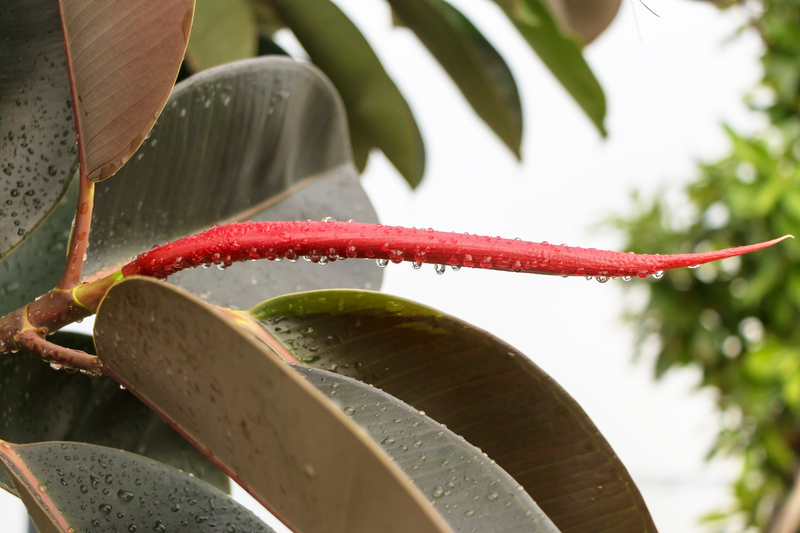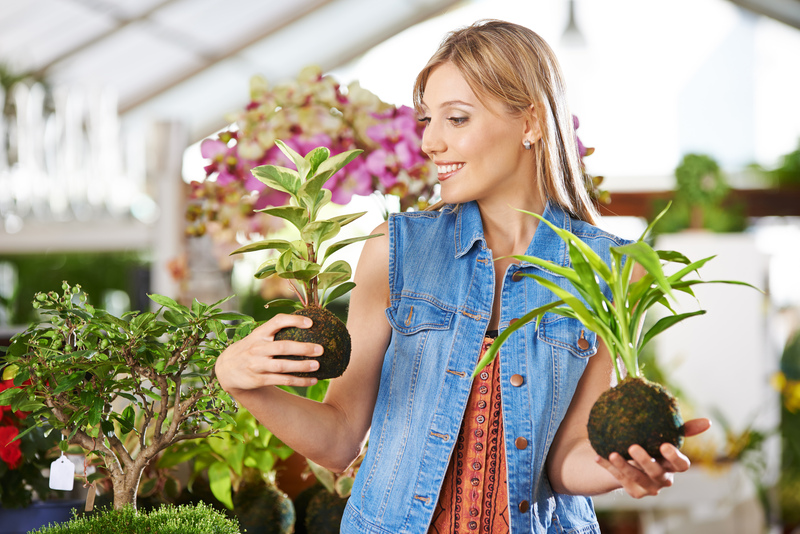Innovative Gardening Tactics for Dog Owners
Posted on 14/08/2025
Innovative Gardening Tactics for Dog Owners
If you love both lush gardens and your playful canine companion, you know how challenging it can be to maintain both. But what if you could enjoy the best of both worlds? Innovative gardening tactics for dog owners can transform your backyard into a thriving oasis that's safe and delightful for pets. In this comprehensive guide, we'll share practical, dog-friendly gardening strategies, creative design ideas, and plant suggestions that will ensure your garden stays vibrant and your dog remains happy.
Understanding the Challenges: Dogs and Gardens
Dog owners face unique hurdles when it comes to gardening. From digging and trampling to chewing and marking, dogs can inadvertently wreak havoc on delicate plant beds and carefully landscaped areas. Gardeners with dogs often seek ways to create a harmonious space where both plants and pups thrive.
- Trampling and Digging: Dogs may damage turf or garden beds by zooming, racing, or digging for fun.
- Chewing: Young or curious dogs might nibble plants--sometimes causing harm to both plant and pet.
- Urine Damage: Pet urine, especially from female dogs, can cause unsightly yellow patches on lawns.
- Chemical Safety: Fertilizers and pesticides can pose health risks to inquisitive dogs.
To address these issues, innovative approaches to dog-friendly gardening are necessary--offering both protection for your botanical investments and enrichment for your furry friend.

Designing a Dog-Friendly Garden
Strategic Garden Layout
Begin with thoughtful garden planning. Designate zones for both your dog and your plants. This approach not only protects sensitive garden beds but enriches your pet's outdoor experience.
- Pathways: Use robust materials like flagstone, gravel, or mulch to create clear pathways. Dogs tend to follow the same routes--incorporate these "dog runs" into your layout for mutual benefit.
- Barriers and Borders: Low lattice fences, dense shrubs, or garden edging help keep dogs out of delicate beds. Raised beds also add an attractive visual component while protecting your blooms.
- Open Spaces: Reserve a grassy area or a patch of lawn where dogs can play freely without risking your prized perennials.
Choosing Durable Dog-Friendly Surfaces
Resilient ground cover should be a top priority in pet-safe gardening strategies.
- Clover: Resistant to urine burns and soft on paws.
- Artificial Turf: A low-maintenance option that withstands digging and wear.
- Mulch: Use dog-safe mulches like cedar; avoid cocoa mulch, which can be toxic to dogs.
- Gravel and Pavers: Ideal for pathways, offering drainage and durability.
Tip: Regularly inspect and replenish ground covers to minimize mud and wear in high-traffic areas.
Plant Selection: Safe and Sensible Choices
Not all plants are created equal when it comes to curious canines. Some common garden staples can be harmful if ingested. Innovative gardening tactics for dog owners include selecting non-toxic, hardy, and low-maintenance varieties.
Dog-Friendly Plant Recommendations
- Marigolds (Tagetes): Bright, easy to grow, and non-toxic.
- Sunflowers (Helianthus): Safe and stunning for shared spaces.
- Herbs (e.g., Basil, Sage, Thyme): Many are safe and offer culinary benefits.
- Camellias: Attractive flowering shrubs, safe for dogs.
- Ornamental Grasses (Pennisetum, Miscanthus): Robust and dog-resilient.
Plants to Avoid in Dog Gardens
Be aware of pet-toxic plants that can cause illness if consumed. Some common examples include:
- Lilies
- Daffodils
- Azaleas
- Foxglove
- Oleander
- Certain mushrooms
Check with local gardening centers or veterinary resources for comprehensive lists suitable for your region.
Enrichment: Designing with Your Dog's Needs in Mind
An innovative garden for dog owners also considers canine enrichment. By providing entertainment and sensory stimulation, you'll reduce destructive behaviors and foster a happy pup.
Interactive Elements for Happy, Healthy Dogs
- Digging Pits: Designate a specific area with loose sand or soil where dogs are allowed to dig. Bury favorite toys to encourage use.
- Agility Features: Incorporate tunnels, hurdles, or stepping stones for playful exercise.
- Water Features: Small splash pools or fountains can be refreshing, especially in warmer climates. Ensure water is clean and shallow for safety.
- Sensory Gardens: Plant aromatic herbs like lavender and rosemary along pathways for intriguing sniffs.
- Shaded Retreats: Provide cool, restful nooks with canopies, pergolas, or dense shrubs for hot days.
Innovative Solutions to Common Dog Garden Issues
Digging: Channeling the Instinct
If your pup is a prolific digger, don't fight the instinct--work with it! Provide permitted digging zones and use physical barriers or deterrents (like decorative rocks) to protect key flower beds.
- Training: Reward your dog for using designated digging areas.
- Physical Barriers: Bury chicken wire just below the soil's surface where digging is forbidden; dogs dislike the feel.
Urine Spots: Preventing Lawn Burn
A frequent challenge for dog-friendly gardens is urine burn, which produces unsightly yellow patches.
- Rinse Regularly: Thoroughly water urinated areas within a few hours to dilute the nitrogen.
- Encouragement: Train your pet to use a specific "bathroom area"--covered with gravel or mulch--to centralize potential damage.
- Resilient Grasses: Consider fescue, rye, or clover, which tolerate high nitrogen levels better than Kentucky bluegrass.
Chewing and Eating Plants: Safety First
Curiosity may lead your dog to nibble on vegetation. Minimize problems by fencing off sensitive areas and avoiding the use of toxic plants. Bitter-tasting sprays can also deter chewing.
Preventing Pesticide and Fertilizer Mishaps
Use all-natural and pet-safe garden products whenever possible. Organic mulching, compost tea, and neem oil offer protection without hazards.
- No Slug Pellets: These can be deadly for dogs.
- Bones and Fish Fertilizer: The smell attracts dogs, who may dig them up--use other options.
Fencing and Gates: Elegant Solutions for Separation
Physical boundaries don't have to be unsightly. Get creative with fencing solutions that add value and style:
- Living Fences: Use dense, non-toxic shrubs like boxwood or privet for green, natural barriers.
- Picket Fences: Charming and functional--easy to incorporate stylish paint or decor.
- Lattice Panels: Enhance privacy and grow climbing plants for extra beauty.
Ensure fences are high and sturdy enough to deter jumping or breakthrough attempts by exuberant dogs.
Garden Maintenance Tips for Dog Owners
- Regular Inspections: Check for dog-created damage or unhealthy plants each week.
- Prune and Weed: Remove dying or hazardous leaves promptly.
- Safe Storage: Keep garden tools, chemicals, and fertilizers locked up and out of reach.
Creative Vertical Gardening for Limited Spaces
If your garden footprint is small, consider vertical gardening techniques to make the most of your space. Hanging baskets, wall planters, and trellises can elevate flowers and edibles out of the reach of playful pups while adding visual interest.
- Hanging Baskets: Ideal for herbs and flowers.
- Wall Gardens: Utilize vertical wall space for leafy greens and compact blooms.
- Trellised Vines: Beans, peas, and mandevilla contribute beauty and privacy.
Seasonal Considerations: Year-Round Dog-Friendly Gardening
Spring/Summer
- Provide Ample Shade: Plant fast-growing climbers over pergolas for natural cooling.
- Check for Allergies: Some dogs are sensitive to certain blossoms or pollen.
- Water Features: Ensure clean, shallow water sources are always available in warmer months.
Fall/Winter
- Leaf Piles: While fun for play, monitor for mold and pests.
- Snow Prep: Pathways and potty areas should be designed for easy access and maintenance in snow or rain.
- De-Icers: Avoid salt-based de-icers on paths; use pet-safe alternatives like sand or sawdust.

Eco-Friendly and Sustainable Gardening Practices
Adopt sustainable gardening tactics for dog owners to ensure long-term environmental health and pet safety:
- Rainwater Collection: Reduces runoff and provides soft water for plants.
- Native Plants: Attract pollinators and reduce reliance on chemicals.
- Composting: Converts garden waste to nutrient-rich fertilizer--keep bins covered and out of pets' reach.
Conclusion: Harmonizing Gardening Innovation with Dog Ownership
With a spirit of creativity and a mindset for safety, you can enjoy a garden that welcomes both canine companions and lush plant life. From clever layout and thoughtful plant selection to enriching features and regular maintenance, these innovative gardening tactics for dog owners foster a healthier, happier bond between you, your garden, and your furry friend. Start planning your pet-friendly paradise today and revel in the joys of gardening with dogs!

